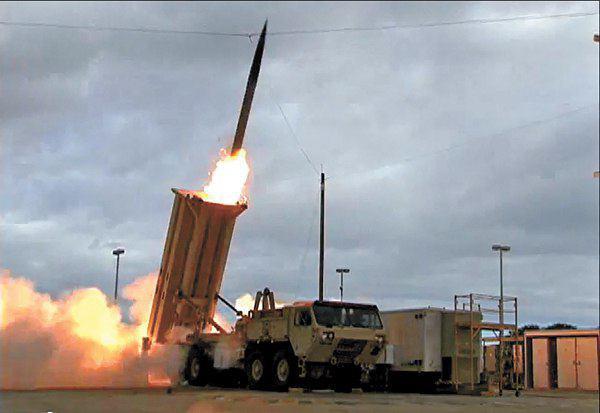BEIJING, July 29 (Xinhua) — The United States will deploy its THAAD anti-missile system in South Korea, claiming that the shield can deter threats from the Democratic People's Republic of Korea. But don't be fooled. The superpower isn't acting in the interest of South Korea but has intent on serving its own agenda.
About two weeks ago, South Korea's defense ministry announced an agreement with the United States to place a battery of the THAAD (Terminal High Altitude Area Defense) system in its southern region, despite repeated opposition from local residents and neighboring countries.
THAAD is developed by the U.S. defense company Lockheed Martin. It is a U.S. Army anti-ballistic missile system designed to shoot down short and medium range ballistic missiles in their terminal phase. It is composed of six mobile launchers, 48 interceptors and a radar and fire control system valued at about 1.3 billion U.S. dollars.
Under the South Korean-U.S. deal, the THAAD battery will be operated by the U.S. Forces Korea and the radar operation will not be made transparent.
China and Russia have expressed strong opposition to the THAAD deployment as its X-band radar can spot Chinese and Russian territories far beyond the Democratic People's Republic of Korea (DPRK).
The AN/TPY-2 early missile warning radar can detect a 600-800 km range with a terminal mode, which South Korea plans to adopt, but it can be converted at any time, and within a day, into a forward-based mode that ranges as far as 2,000 km because the two versions have the same hardware.
"The terminal and forward-based modes just have a difference in software. The conversion takes just several hours," Cheong Wooksik, director of Peace Network, a South Korean civic group.
Even if Seoul and Washington promise their target isn't China or Russia, "such pledge has no meaning on technical terms," said Cheong, implying that Washington's hidden motive is clear.
The THAAD system will be deployed in Seongju County, some 300 km southeast of Seoul. Enraged local residents also strongly opposed the deployment of the THAAD, whose X-band radar is known to emit a super-strong microwave detrimental to the human body.
Since 2012, the United States has been trying to place the THAAD system into South Korea, which experts said has limited effectiveness against missiles from the DPRK.
On a technical note, THAAD is designed to shoot down missiles at a relatively high altitude of 40 to 150 km, but the DPRK's rockets fly at a lower altitude of about 20 km, so the THAAD system might not be able to intercept them, experts noted.
The deployment of THAAD will bring nothing good to the region, including South Korea itself, analysts said, noting it will undermine peace on the Korean Peninsula as well as regional and global security, not to mention boosting an arms race.
"THAAD will negatively impact the Korean Peninsula, Northeast Asia and the world peace," said Cheong.
Cheong expects THAAD to raise regional tensions rather than deter the DPRK's nuclear and missile threats, which the South Korean government cited as a main reason for the THAAD deployment on its territory.
With the THAAD deployment, South Korea now enters the U.S. missile defense network, which would harm the geopolitical balance in the region and provoke strategic change from China and Russia.
Cheong said South Korea's security is secured without THAAD. Improved relations with the DPRK and negotiations to denuclearize the peninsula are essential ensuring regional peace and stability.





